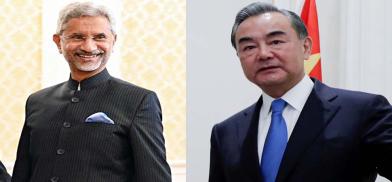China's forked tongue amid sinister regional agenda
With the Communists back in power in Kathmandu, China will be able to push its own agenda, as well as that of Pakistan, in Nepal. It has cross-border ramifications for India at the tactical level, as well as larger ones at the strategic level when seen in concert with Chinese moves in Bhutan and Myanmar.

Addressing a symposium on ‘International Situation and China’s Foreign Relations in 2022’ on December 25, 2022, China’s Foreign Minister Wang Yi said, “China and India have maintained communications through the diplomatic and military-to-military channels, and both countries are committed to upholding stability in the border region. We stand ready to work with India in the direction toward steady and sound growth of China-India relations”.
Wáng Yì has been serving as China’s foreign minister since 2012. He was elevated to State Councilor in 2018 and has recently been inducted into the Politburo of the Chinese Communist Party (CCP). His above message is the usual combination of ‘ongue in cheek’ and ‘stab in the back’ tactics, for which he is nicknamed the ‘Silver Fox’.
China’s refusal to revert to the April-May 2020 positions in eastern Ladakh, consolidation in the newly occupied locations and preparating grounds for further operations, indicate the opposite to what Yi portrays as Chinese intentions. In addition are the heavy deployments along the entire border and frequent transgression in Arunachal Pradesh.
Utopians in India are interpreting Wang Yi’s message as an olive branch. One view is that China is worried about losing its iPhone market in India, even as China is profiting more through India-China bilateral trade than before invading Ladakh in 2020. Interestingly, China claims that trade with India touched $103 billion in the first nine months of 2022 whereas Indian data shows bilateral trade was $91 billion.
Another flight of fancy is that China is showing the white flag to India because 63 PLA personnel were taken prisoner at Yangtse recently - no photos taken to protect their sensitivities?
Shenanigans in Nepal
While Beijing kept India busy at the border and another round of military-to-military talks in Ladakh, China has quietly re-installed a Communist regime in neighboring Nepal with Pushpa Kamal Dahal (Prachanda), as the Prime Minister of Nepal for the third time. Prachanda is former guerilla leader of the Maoists insurgency, as is KP Sharma Oli, another Maoists leader. Oli has served as Nepal’s prime minister thrice. Prachanda and Oli were Beijing’s blue-eyed boys during the China-induced and backed Maoists insurgency in Nepal.
Earlier, China had succeeded in merging the CPN (UML) headed by Oli and the Maoists Centre led by Prachanda to form the Nepal Communist Party (NCP). But the NCP dissolved in March 2021 after it underwent an internal split in 2020 because of disagreements between Oli and Prachanda. Now with Oli supporting Prachanda and agreement for having a rotational prime minister between the two, the NCP is more or less revived.
Oli was demonstratively dancing to the tune of then Chinese ambassador to Nepal, Hon Yangi. Now Prachanda can be expected to sing the same song as the new Chinese ambassador to Nepal, Chen Song. With the Communists back in power in Kathmandu, China will be able to push its own agenda, as well as that of Pakistan, in Nepal. It has cross-border ramifications for India at the tactical level, as well as larger ones at the strategic level when seen in concert with Chinese moves in Bhutan and Myanmar.
As the prime minister, Oli had ignored Chinese intrusions in Nepal, especially in the Humla area where the PLA and Chinese border police have constructed multiple buildings. Instead, he raised claims on three pieces of Indian territory and published a new map of Nepal showing them as part of Nepalese territory. Prachanda would be pushing these claims more to please his mentors in China.
India's folly
The recent incident of stone-pelting from the Nepal side in Dharchula district of Uttarakhand indicates this; stones were pelted for four hours at Indian workers engaged in constructing an embankment on the Indian side of River Kali – a few workers were hurt, the machinery in use was damaged and its operator-driver injured.
India needs to emulate the art of handling regimes to further its own national interests as being done by the US and China. Beijing should be expected to continue mollycoddling India while it advances its claims and executes them. China’s task is made easier by India. Not branding China the aggressor and continuing with military-to-military talks while maintaining no loss of territory. The effect of such a policy on smaller neighbors (how they view India) should also be of concern.
(The author is an Indian Army veteran. Views are personal.)










Post a Comment